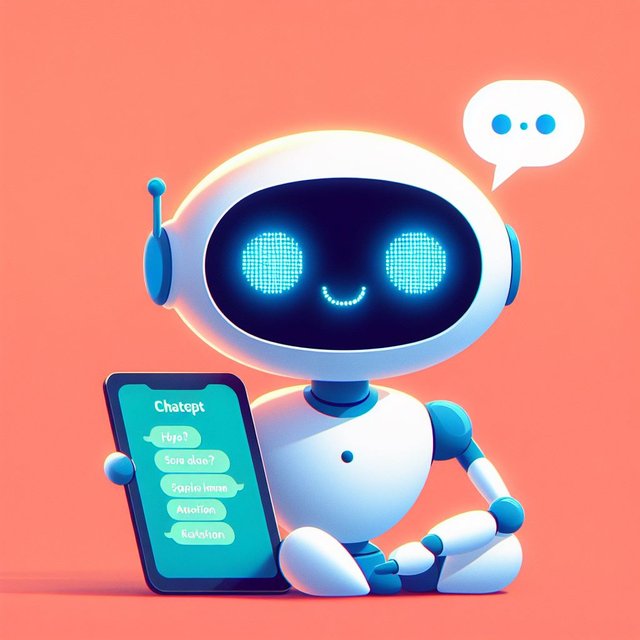
I. Introduction: Unveiling the Power of Conversational AI
- A. Demystifying Large Language Models (LLMs): Within the ever-expanding landscape of artificial intelligence (AI) lies a transformative technology known as Large Language Models (LLMs). These intricate algorithms are meticulously trained on colossal datasets of text and code, empowering them with remarkable capabilities. LLMs can generate human-like text, translate languages with exceptional proficiency, craft creative content across genres, and provide informative answers to complex inquiries. ChatGPT, a pioneering LLM developed by OpenAI, stands as a prime example, specifically designed to excel in the realm of conversation.
II. Unveiling ChatGPT: A Progeny of OpenAI
A. Core Functionality and Design Principles: OpenAI, a research and development company dedicated to the safe and beneficial potential of AI, introduced ChatGPT in November 2022. This LLM is specifically optimized for engaging in conversations that mimic the natural flow of human interaction. Central to its design is the ability to refine and steer the dialogue based on user input. Users can influence the conversation's length, format, style, level of detail, and language, fostering a more natural and tailored experience.
B. Architectural Nuances: Decoding the Conversational Engine: Underpinning ChatGPT's functionality lies a complex architecture built upon transformers, a deep learning model particularly adept at understanding the intricacies of language. These transformers are trained on massive amounts of text data, allowing them to identify patterns and relationships between words. This enables ChatGPT to comprehend the context of a conversation, generate relevant responses, and even adapt its style and tone to match the user's communication. Furthermore, OpenAI employs a technique called reinforcement learning with human feedback (RLHF) to refine ChatGPT's conversational abilities. RLHF involves human experts providing feedback on the quality and appropriateness of the LLM's responses, guiding it toward more natural and engaging conversations.
III. Conversational Capabilities: Fostering Meaningful Dialogue
A. Tailored Responses and Follow-up Engagement: A hallmark of ChatGPT's proficiency lies in its ability to deliver contextually relevant responses. It considers previous prompts and replies, allowing it to maintain a cohesive flow and avoid nonsensical exchanges. This fosters a sense of continuity and makes interacting with ChatGPT feel more like a natural dialogue with another person. Moreover, ChatGPT isn't limited to one-off responses. It can engage in follow-up questions or delve deeper into topics based on user cues, creating a more engaging and dynamic conversational experience.
B. Advancing Fluency: Mastering the Nuances of Human Interaction: Beyond simply conveying information, ChatGPT aspires to achieve fluency in its communication. This involves understanding and employing the subtle nuances of human language such as sarcasm, humor, and figurative speech. While still under development, ChatGPT is constantly learning and improving its ability to recognize these nuances and tailor its responses accordingly. This ongoing refinement allows for more natural and engaging conversations, blurring the lines between human and machine interaction.
IV. A Multifaceted Assistant: Applications Beyond Conversation
A. Content Creation and Ideation Spark: ChatGPT's capabilities extend far beyond casual conversation. Content creators can leverage its fluency and vast knowledge base to brainstorm ideas, generate outlines, or even draft initial content pieces. Writers can utilize it to overcome writer's block or explore new creative avenues. While the output might require human editing and refinement, ChatGPT serves as a valuable springboard for igniting creativity and streamlining the content creation process.
B. Educational Ally: Facilitating Knowledge Acquisition: In the educational realm, ChatGPT presents itself as a potential asset for both students and educators. Students can utilize it to delve deeper into complex topics, ask clarifying questions, and receive explanations in a conversational format. Educators can leverage ChatGPT to personalize learning experiences, create interactive quizzes, or craft engaging lesson plans. While it shouldn't replace traditional educational methods, ChatGPT can serve as a valuable supplementary tool to enhance the learning process.
C. Enhanced Productivity: Streamlining Workflows: The potential applications of ChatGPT extend to the professional sphere as well. It can be used to generate reports, summarize lengthy documents, or translate emails and messages. Furthermore, it can assist with brainstorming solutions to problems or even help in creative tasks such as designing presentations. By automating mundane tasks and facilitating efficient information processing, ChatGPT can empower users to streamline their workflows and become more productive.
V. The Future of ChatGPT: Continuous Learning and Evolving Potential
- A. Ethical Considerations and Responsible Development: As with any powerful technology, the development and application of ChatGPT necessitate careful consideration of ethical implications. Issues such as bias in training data, the potential for misuse, and the impact on human communication all require ongoing evaluation and discussion. OpenAI and other developers of LLMs must prioritize responsible development
You've got a free upvote from witness fuli.
Peace & Love!
Downvoting a post can decrease pending rewards and make it less visible. Common reasons:
Submit